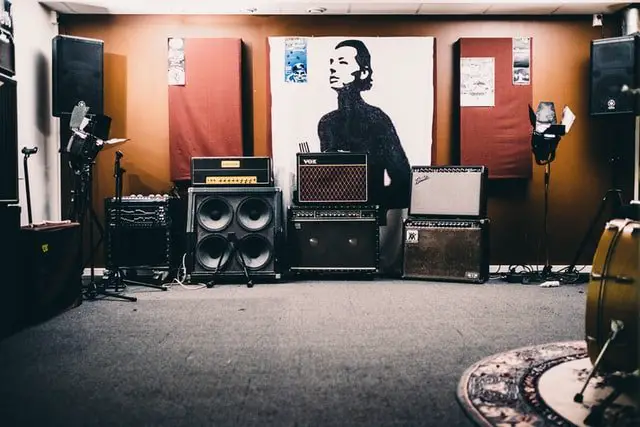The basement can be used for many different purposes such as food and drink storage, or additional living space. However, basements are normally not designed with air quality in mind. Therefore, you should check your basement air quality regularly.
Here I share some tips on how to check for indicators of poor air quality without the use of equipment. Additionally, I recommend investing in a good air quality monitor.
Mold growth, chemical storage that might leak, and the condition of your ventilation system are indications that you have poor air quality. In addition, health problems such as eye or throat irritation, headaches, and fatigue can indicate poor air quality.
Basement air quality concerns
The basement is a little different than the other areas in a house because it may not have been designed to be used as a living space. This means that it often lacks proper ventilation. Natural airflow and natural ventilation also tend to be low.
On top of that, the basement is often used for appliances such as boilers that can be a source of air pollution. Additionally, any stored chemicals such as cleaning products or paints are a potential source of air pollutants.
The most concerning basement air quality factors are:
- radon gas
- mold growth
- chemicals
- poor ventilation

Radon gas
Radon gas is especially concerning in the basement because it originates from the soil and therefore often enters the house via the basement. On top of that, radon gas is about eight times heavier than air. Therefore, it will accumulate in your basement as this is the lowest point in the house.
Unfortunately, radon gas is a colorless, odorless gas. Therefore, there is no way of knowing without measurement equipment if you have radon gas in your basement.
Radon gas is very dangerous since it is a radioactive gas that is strongly associated with lung cancer. You can read all about radon in my article: What is radon?
Mold growth
The spores of molds are always present in the air in very small quantities. They normally do not pose any health hazards. However, when mold spores land in a spot that is humid and warm, they can start to grow and produce very high quantities of spores. This can lead to various health effects and can damage wood and fixtures.
Luckily, mold is quite easily recognized by dark (often black or dark green) dots or stains and patches. So, you should thoroughly check your basement for signs of mold or damp places that could become breeding grounds of mold.
In the basement the areas you should check are:
- potentially leaking or damp pipes
- walls near appliances that become hot or could release moisture
- areas that you don’t often clean
- food and drink storage

Chemicals, cleaning products, and paints
Surprisingly even cleaning products are a source of indoor air pollution. They are often made of various chemicals that are released into the air when they are used or during storage.
Check if your chemicals and cleaning products are of natural origin. Otherwise, they could be emitting a variety of potentially hazardous compounds into the air. It is best to use natural products and to make sure they are not leaking or have spilled in your storage area.
Paint can be another source of indoor air pollution. They can release gases that can be harmful to your health, especially when you have just painted. You can often tell by the smell that comes from your paint that it is emitting potentially harmful compounds. Therefore, make sure you are airing during painting, and keep your ventilation system on and in good condition.
According to an extensive study on the release of Volatile Organic Compounds (VOCs) during and after painting, it is recommended to at least not use the painted room for 14 days. Another option is to use low-VOC paint.
Ventilation system functioning
The most important method of preventing poor air quality is your ventilation systems. It should be running all the time and has to be in good condition to function properly.
Therefore, a good indication of your basement air quality is the condition of your ventilation system. Regularly check, clean, and replace your ventilation filters, vents, and grilles to keep them in good condition. You can quickly identify if they need cleaning by how dirty they are.
Additionally, make sure to replace your ventilation filters approximately twice a year. This will depend on how quickly they get dirty, whether you have pets, and if you have preexisting respiratory issues.
Health symptoms that indicate poor air quality
Poor air quality can result in all kinds of health problems, ranging from minor complaints to serious long-term effects. If you start noticing some of the symptoms below, this can be an indicator of poor air quality.
The first symptoms to be aware of
The most common symptoms of air pollution are due to short-term exposure to low amounts of pollutants. According to the US Environmental Protection Agency, these short-term symptoms include:
- irritation of the eyes, nose, or throat
- headaches
- dizziness
- fatigue
- increased symptoms of asthma or any other illness
An important factor in experiencing health effects is your overall wellbeing, age, and possible sensitivity to the compound. Additionally, increased exposure due to higher concentrations or longer exposure time increases the potential health effects.
Young children are most at risk
Children are more susceptible to indoor air pollutants because they inhale more air and thus pollutants per kg of body weight than adults. Additionally, children’s airways are narrower than adults, so irritation and swelling of the airways can result in relatively greater airway blockage.
Therefore, look at (your) children and how they are feeling when they are playing in the basement. If they seem to show health effects that might indicate poor indoor air quality, it might be time to take measures.
Air quality monitors
Indoor air quality changes over time due to changes in air temperature and usage of the basement. Therefore, if you want to be absolutely sure about your basement air quality, constant measurements are the safest option.
An air quality monitor is an excellent tool to continuously be aware of potential danger in your basement. It can measure airborne chemicals, temperature, and humidity, depending on the device.
If you are interested in buying an air quality monitor, I would recommend choosing a model that measures a wide range of air pollutants. In this way, you never have to worry if you are missing just that one compound that is causing problems.
I found a Norwegian company called Airthings, which produces excellent air quality monitors. They are easy to operate (just wave your hand in front of the device) and send their data to an app on your phone.
Therefore, I recommend the Airthings Wave Plus. This air quality monitor not only measures airborne chemicals such as VOCs but also CO2 levels, temperature, humidity, and radon.
Discount on Airthings air quality monitor
By using this link to the Airthings Wave Plus air quality monitor you will get a discount of about 10%!


